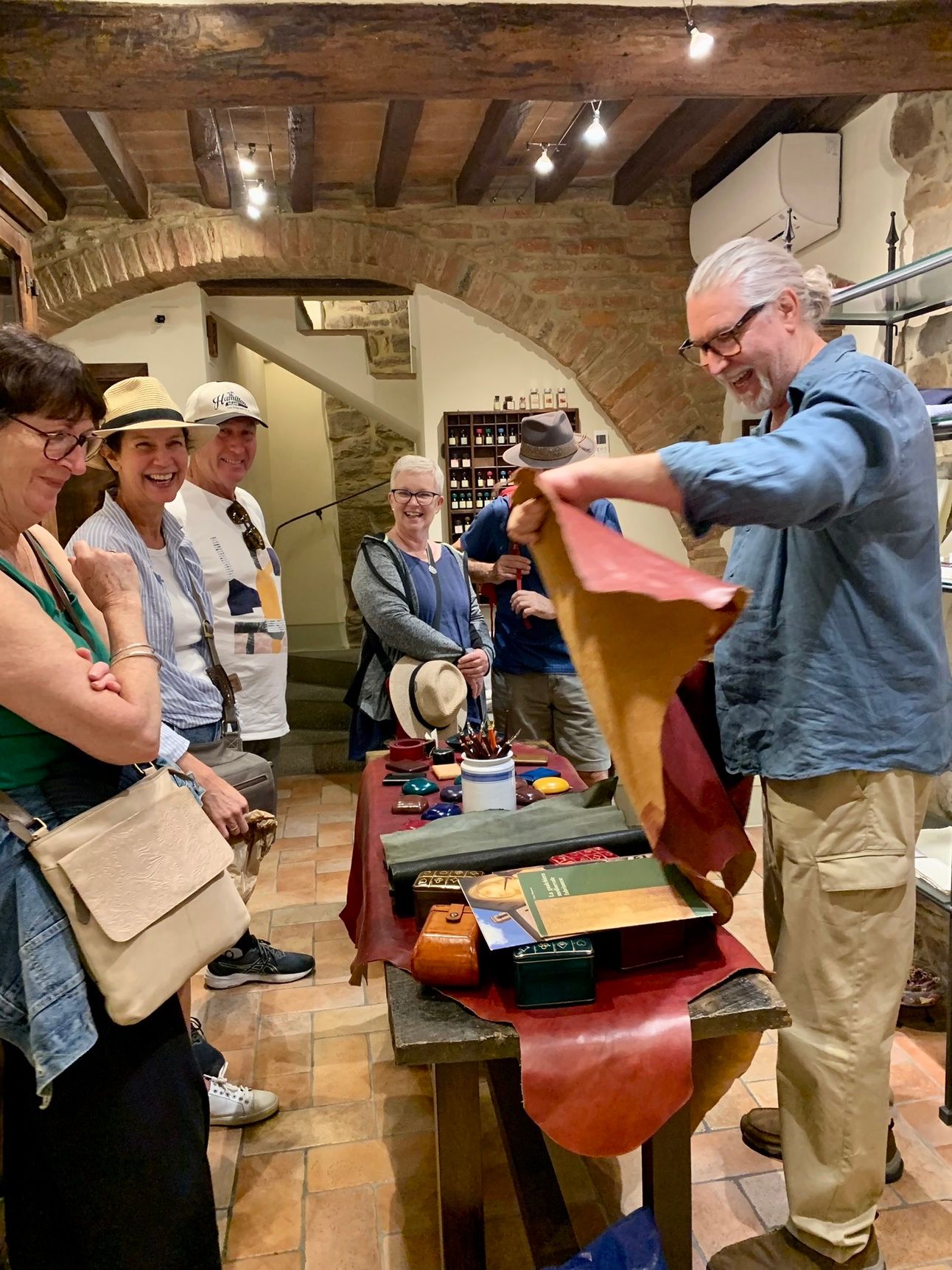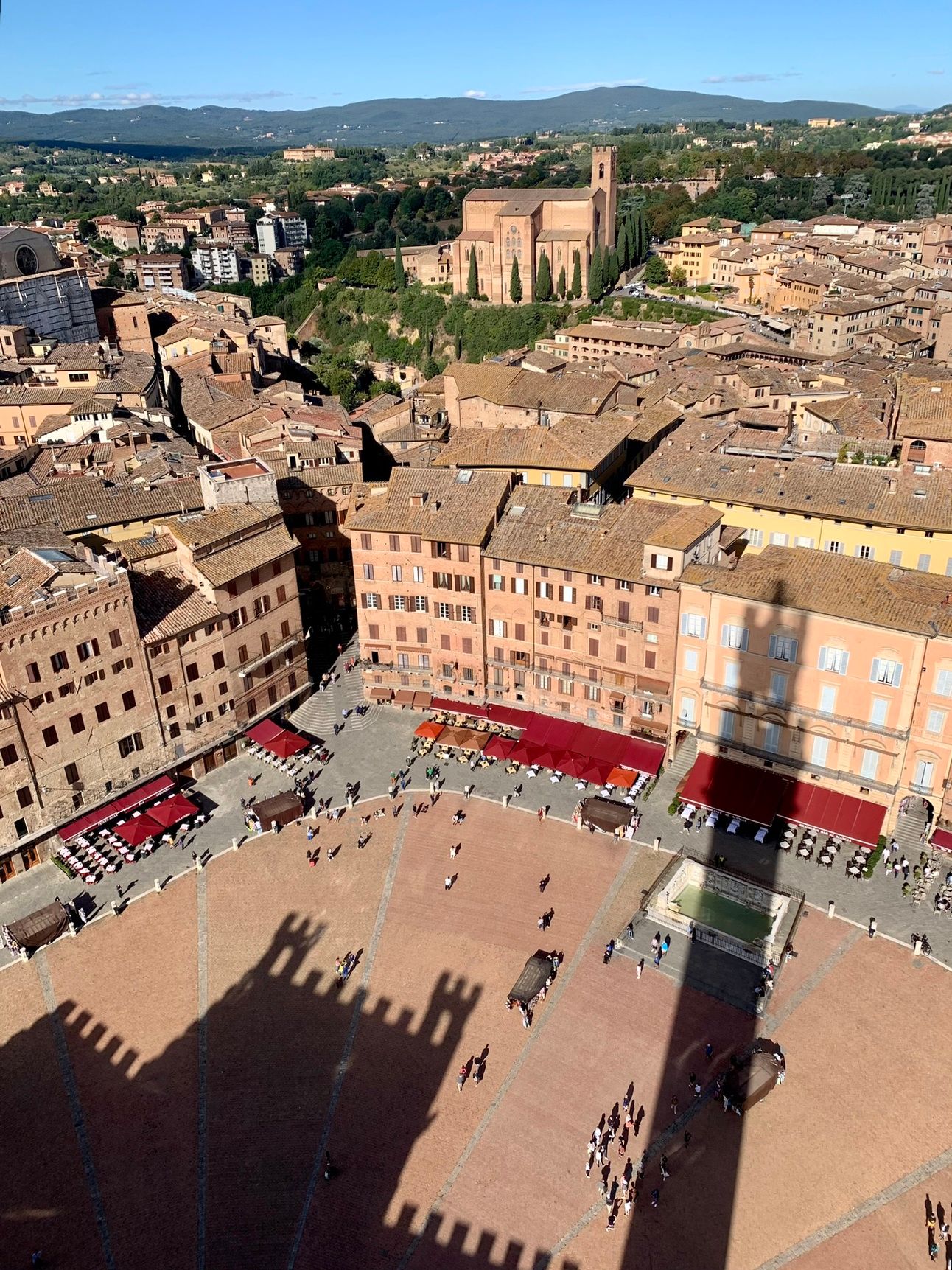Under the Tuscan sun

Think Italy. Think Tuscany.
Rolling hills. Golden stone farmhouses. Vineyards. Hilltop medieval towns. Olive groves. Everything you imagine, it’s true. The Italian name for Italy’s fifth largest region is Toscana. It is geographically diverse with a long stretch of coastline along the Tyrrhenian Sea and the famous hills in the middle reaching inland to the Apennine Mountains.
The Etruscans were the first major civilisation in the area; it was the birthplace of the Italian Renaissance; the birthplace of the Italian language and there is history around every corner. Italy proudly boasts the most UNESCO World Heritage Sites in the world and seven of them are in Tuscany.
A region with 287 towns offers a lot to see. Here are a few of my favourites.

The small Etruscan village of Cortona
Like so many towns in Tuscany and all over Italy, Cortona spent centuries as a sleepy, hill-top medieval town. Then a book was written in 1996 called ‘Under The Tuscan Sun’. The movie followed seven years later starring Diane Lane and we all wanted to find our own romantic Tuscan villa. Still do.
Perched on top of a hill 2,000 feet above sea level, Cortona has sweeping views across the Val di Chiana with glimpses of Lake Trasimeno, Italy’s fourth largest lake. Surrounded by Etruscan walls around 3,000 years old, it has always been considered one of Tuscany’s classic hilltop towns and one of Italy’s oldest towns, commonly referred to as “mother of Troy and grandmother of Rome”.
Today, only about 1,500 people live in the historic centre. It is charming, rustic and romantic and the quintessential Tuscan town for aimless wandering, meeting locals and dreaming of life in your own Tuscan villa.

A larger than life local personality is Ivan Botanici, owner of a wonderful shop called Il Pozzo, which means ‘the well’. The shop features original art, old photos and ancient maps in a small gallery; leather journals; hand-made paper and original jewellery. When Ivan was expanding his store he found an Etruscan well dating back to 400BC and Etruscan artifacts. Now fish swim in the well. He likes nothing better than to offer you a glass of prosecco, bring out the artifacts for you to nervously hold and tell his story.

Montepulciano is the King of every wine!
Impossible to choose, but if I HAD to choose one place to live in Italy, I would choose Montepulciano. In 2015 I visited for the first time to attend Il Sasso Language School for two weeks to become fluent in Italian. That didn’t quite happen, but I did fall in love with the town.
Positioned on its high tufa ridge, there are glorious views from every aspect across the Val d’Orcia and Val di Chiana. It has one of the most intact historic centres of any Italian town. In the 13th century, the city grew quickly and the walls were expanded several times, but apart from a few nips and tucks, no major building work has taken place since 1580.
Montepulciano’s most popular attraction, though, isn’t made of stone. It’s the famous wine, Vino Nobile, a robust red that can be tasted in any of the cellars lining the main street that winds 1.5 kilometres from the bottom of the town all the way to the top. Wine has been made here since the 8th century, possibly earlier. In 1685 the poet and naturalist, Francesco Redi, would make it famous with a line in an epic poem declaring “Montepulciano is the King of every wine!”.
The Nobile was one of the first wines to obtain, in 1980, the denomination of superior quality DOCG.

Pienza, the perfect Renaissance town
The great history of Pienza is concentrated in the space of just six years from 1458-1464 during the papacy of Pius II, born Enea Silvio Piccolomini. Elected Pope, he commissioned an architect from Florence to make his native village (then called Corsignano) into a new city which he then named after himself.
The project was to design the perfect Renaissance town in which people lived together peacefully and where geometry, ideal proportions and urban decor would replace the chaos and disorder of the medieval cities. Pienza was declared a UNESCO World Heritage Site in 1996.
The tale of the travelling sheep
After World War II, many farm residents left the countryside with the dream of a better life in the cities. Many of their properties and surrounding land were left abandoned. In the 1960s the government came up with a plan to revitalise the lush settlements, offering Sardinian farmers the opportunity to come north with their sheep. They sweetened the deal through incentives and low percentage loans on parcels of land. Made solely from sheep’s milk, pecorino cheese here is simply called cacio and has always been a part of the local tradition. The flocks graze freely in pastures rich in aromatic herbs that give the milk and the cheese their unmistakable flavour. In 2004, the Val d’Orcia was given UNESCO World Heritage status as a way to safeguard an historical landscape designed by man following ideals of beauty and harmony with nature.
As soon as you enter the ancient arch of the historic centre, the aroma of pecorino cheese hits you.

Siena, home of the famous horse race
Once a capital to rival Florence, Siena is regarded by some as the most perfectly preserved medieval town in Europe with an easy to enjoy soul. Around 700 years ago the population was 60,000, which was more than Paris. Today the population is 53,000.
Pedestrians rule in the old centre. Siena was the first European city to eliminate cars from its main piazza in 1966. In 1995 Piazza del Campo was declared a UNESCO World Heritage Site.
Rooted in the heart and soul of Siena and the reason for intense passion is The Palio, one of the most ancient events in Italy. The centuries old horse race began in 1283 and is held twice a year on 2rd July and 16th August. Preceded by months of preparation, the winning contrade (neighbourhood) will celebrate for the entire year. The Palio is in the DNA of the Sienese which brings together a tight community bound by traditions that are just as strong today.
The city’s motto to this day is “Siena opens its heart for you”. So true.
Ci vediamo la prossima settimana,
Deb
